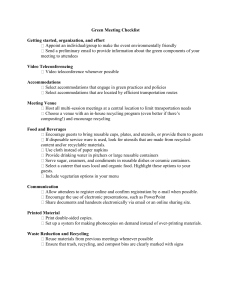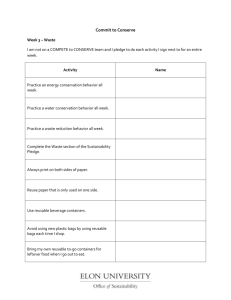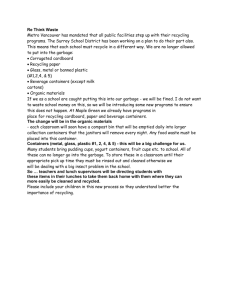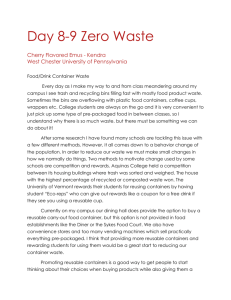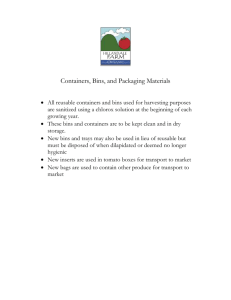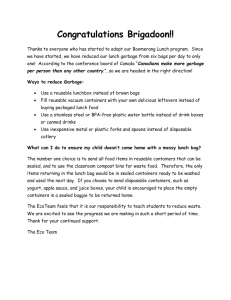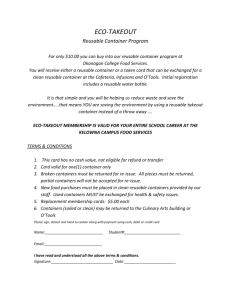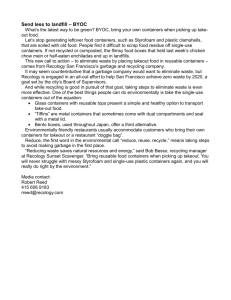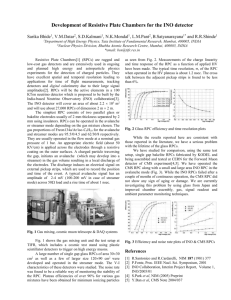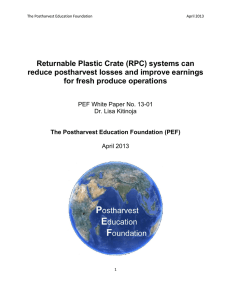LCI-Research-Fact-Sheet-2010
advertisement
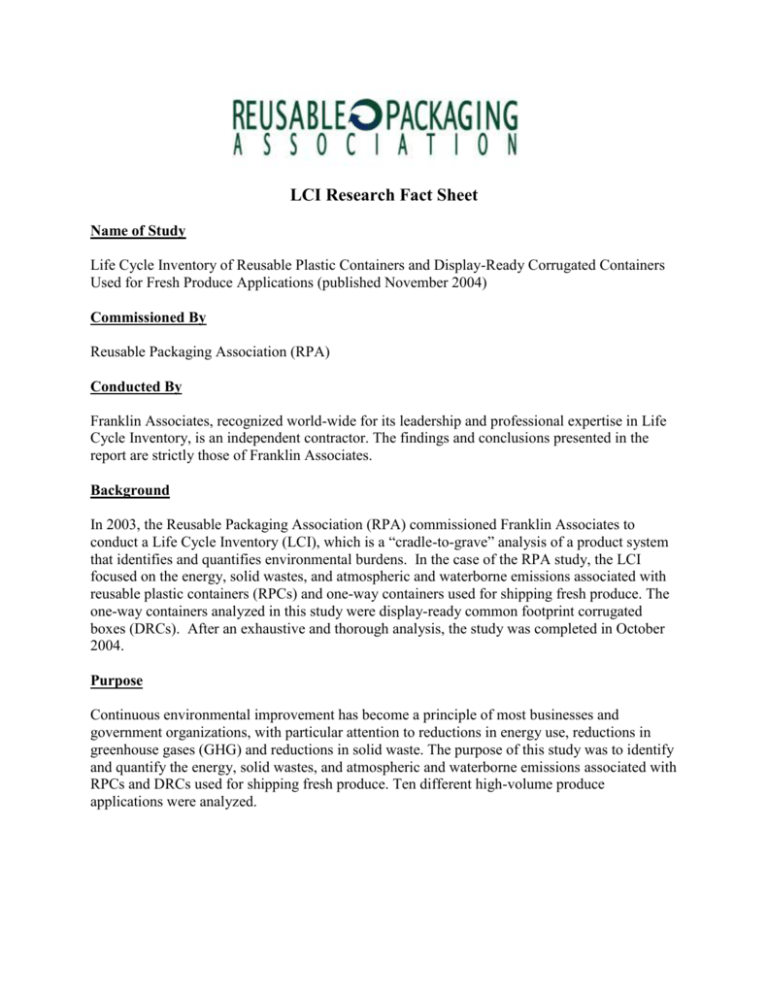
LCI Research Fact Sheet Name of Study Life Cycle Inventory of Reusable Plastic Containers and Display-Ready Corrugated Containers Used for Fresh Produce Applications (published November 2004) Commissioned By Reusable Packaging Association (RPA) Conducted By Franklin Associates, recognized world-wide for its leadership and professional expertise in Life Cycle Inventory, is an independent contractor. The findings and conclusions presented in the report are strictly those of Franklin Associates. Background In 2003, the Reusable Packaging Association (RPA) commissioned Franklin Associates to conduct a Life Cycle Inventory (LCI), which is a “cradle-to-grave” analysis of a product system that identifies and quantifies environmental burdens. In the case of the RPA study, the LCI focused on the energy, solid wastes, and atmospheric and waterborne emissions associated with reusable plastic containers (RPCs) and one-way containers used for shipping fresh produce. The one-way containers analyzed in this study were display-ready common footprint corrugated boxes (DRCs). After an exhaustive and thorough analysis, the study was completed in October 2004. Purpose Continuous environmental improvement has become a principle of most businesses and government organizations, with particular attention to reductions in energy use, reductions in greenhouse gases (GHG) and reductions in solid waste. The purpose of this study was to identify and quantify the energy, solid wastes, and atmospheric and waterborne emissions associated with RPCs and DRCs used for shipping fresh produce. Ten different high-volume produce applications were analyzed. Applications and Functional Unit The ten produce applications used in the study were as follows: Apples Bell peppers Carrots Grapes Lettuce-head Oranges Peaches/nectarines Onions Tomatoes Strawberries. The functional unit was 1,000 short tons or 2 million pounds of each type of produce hauled between grower and retailer. Key Findings Produce shipping scenarios analyzed within the defined scope of this study indicate that, on average across all 10 produce applications, RPCs: Require 39% less total energy Produce 95% less total solid waste Generate 29% less total greenhouse gas emissions than do DRCs for corresponding produce applications. Most Significant Factor One factor dominates the findings in this study: multiple trips (“turns”) in an RPC closed operating system lead to materials efficiencies that create relatively low environmental burdens. In the DRC system a container is manufactured for each trip to retail. Even when recovery and recycling rates for DRCs are high, the production step (including recycling) introduces a higher level of burdens. In the case of RPCs and DRCs, multiple reuses of RPCs result in lower environmental burdens than single-trip DRC containers. Because produce is the harshest test case for reusable containers, these results bode extremely well for other applications. Conclusion EPA has long used the waste management hierarchy of “Reduce, Reuse, Recycle.” This LCI considers all three techniques: reduction in weight of DRCs, reuse of RPCs, and recycling of both RPCs and DRCs. The results indicate that, for the produce applications studied, reuse with closed-loop recycling at end of life is the most efficient means of reducing not only solid waste but also energy use and GHG emissions.
